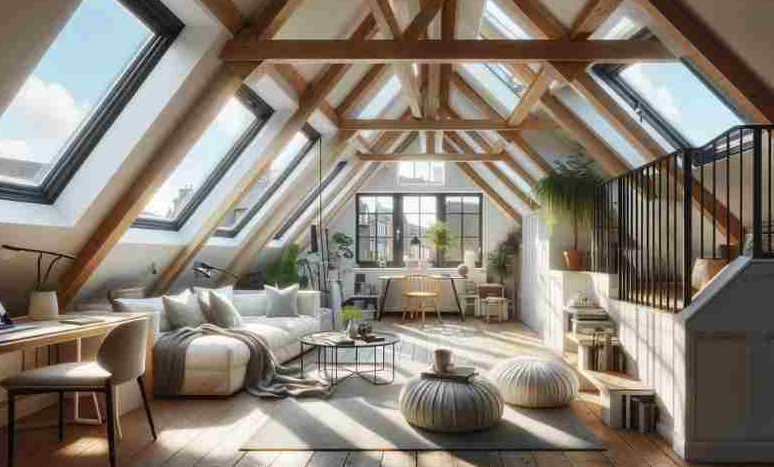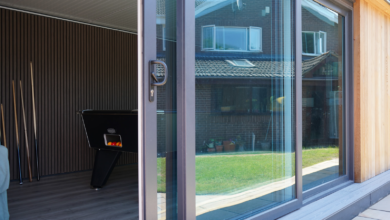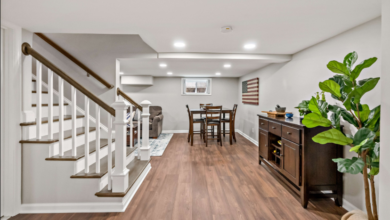Loft Conversion Projects: How Leading London Architects Are Capitalizing on Market Growth

The loft conversion market in London is booming. It’s not hype. It’s real demand. More homeowners are looking upward for space solutions because London real estate is finite. You can’t build outward endlessly. But you can build upward.
Understanding why loft conversions have become such a significant part of architectural practice in London, or learning how Extension Architecture positions itself within this growing market, helps you see why specializing in this area matters.
If you want to know more about the market trends driving loft conversion demand, or understand how architects are adapting their practices to capitalize on this growth, you’ll see why being equipped for this type of work is increasingly important. The architects thriving right now are the ones who recognized the trend early and built expertise around it.
Why The Loft Conversion Market Is Booming
London property prices keep rising. New builds are expensive. Extensions require planning permission and take months. But loft conversions often fall under Permitted Development rights. No planning permission needed. That speeds everything up.
Homeowners want more space without moving. A loft conversion adds a bedroom, office, or extra living room without leaving their neighborhood or school catchment. That’s powerful motivation.
The math works too. A loft conversion costs less than most extensions. It adds significant square footage. It adds property value. For homeowners, it’s a smart investment.
Architects are seeing this play out in their project pipelines. Loft conversion inquiries have jumped. Existing clients who’ve never considered architectural work are now calling asking about their loft. This is new demand that didn’t exist five years ago at this scale.
Market Size and Opportunity
London has millions of properties with unused loft space. Most of these properties never had proper attic insulation or headroom planning. They just have roof space nobody’s used.
That’s potential. Enormous potential. An architect that positions themselves as a loft conversions specialist in london is tapping into a market that’s still growing.
Building firms are seeing it too. Contractors who’ve developed loft conversion expertise are busy. They’re booked months out. They’re raising prices because demand is outpacing supply.
The window is open right now for architects to build loft conversion practices. In five years, this could be as standard as kitchen renovations.
Design Challenges Specific to Lofts
Here’s what separates architects who do decent loft conversions from architects who do great ones. Design thinking.
A loft has constraints. Sloped roofs. Limited headroom at edges. Existing structural limitations. Building Regulations requirements. Permitted Development rules to follow.
A mediocre architect works within these constraints. A good architect sees them as design opportunities. How do you make a room work under a sloped roof? How do you use the limited space efficiently? How do you create storage solutions that actually work?
The best loft conversions feel intentional. The room layout embraces the roof slope instead of fighting it. The design uses the constraints to create character.
This is where architectural expertise becomes visible. The difference between a room that feels awkward and a room that feels perfect is usually good design thinking about the specific constraints of loft space.
See also: What Is a Residential ESS and Why Is It Important for Modern Homes?
Permitted Development Knowledge as Competitive Advantage
Most contractors understand Permitted Development at surface level. They know loft conversions often qualify. They don’t always understand the nuances.
Conservation Area restrictions. Listed building complications. Different rules in different boroughs. Specific measurement requirements. The rules are actually complex.
An architect that deeply understands Permitted Development rules has a competitive advantage. They can tell clients immediately whether a project qualifies. They can design accordingly. They can navigate the Building Regulations approval process efficiently.
They can also help contractors avoid mistakes. A contractor unfamiliar with Permitted Development requirements might build something that fails inspection because they missed a technical detail.
An architect familiar with these details prevents problems. That’s value.
Structural Considerations That Require Expertise
Not all lofts are equal. Some have good structure. Some need reinforcement. Some have complications that make conversion difficult.
A competent architect assesses the structural situation. They bring in a structural engineer if needed. They understand what’s feasible and what’s not.
They know that adding a floor to your loft isn’t just about walls and roof. It’s about load bearing. It’s about supporting the new weight. It’s about not damaging the existing structure.
A bad architect ignores structural realities and designs something that can’t actually be built. A good architect designs something structurally sound that also works aesthetically.
Client Education as Part of the Service
Most homeowners don’t understand loft conversions. They think it’s simpler than it actually is. They don’t know about Permitted Development. They don’t understand Building Regulations requirements.
An architect that educates clients well builds better relationships. Clients understand what’s happening. They’re not surprised by the process. They’re not shocked by inspection requirements.
This education also filters out clients who aren’t serious. A serious client listens to the requirements and proceeds. An unserious client gets frustrated and walks away. That’s fine. You don’t want clients who aren’t committed.
Market Positioning for Architects
The architects winning in London right now are positioning themselves as loft conversion specialists. Not general architects. Not jacks of all trades. Specialists.
This positioning means loft conversion inquiry leads convert higher. When someone searches for loft conversion architects in London, the specialists rank higher. They get more calls.
Specialization also means you can charge more. A specialist commands premium fees. You’re not competing on price. You’re competing on expertise.
Extension Architecture is well positioned for this. They have loft conversion experience. They have design expertise. They understand the market.
Building a Reputation in This Space
Reputation is built on completed projects. Before and after photos. Client testimonials. Word of mouth from satisfied customers.
The architects generating the most loft conversion work right now have portfolios showing excellent loft conversions. They’re showing how design transforms a basic loft space into something beautiful and functional.
They’re also generating referrals. A happy client recommends their architect to friends. That recommendation carries weight. Friend of a friend is often how residential architects get work.
Timeline and Process Advantages
An architect that’s done many loft conversions understands the timeline. They know how long Permitted Development Building Regulations takes. They know typical construction timelines. They can give clients realistic expectations.
They also have systems. Standardized design approaches that work. Relationships with Building Control inspectors. Relationships with structural engineers. These systems make projects move faster.
The Competitive Landscape
More architects are entering the loft conversion space. It’s attractive market. It’s growing market. But not all architects doing loft conversions are doing them well.
The ones thriving are the ones with real expertise. The ones that design thoughtfully. The ones that understand Permitted Development deeply. The ones that have systems and efficiency.
Architects without this expertise are doing generic loft conversions. They’re competing on price. They’re struggling to differentiate.
Architects with deep expertise are positioned better. They’re charging more. They’re busier. They’re building sustainable practices.
Looking Forward
The loft conversion boom isn’t a temporary trend. It’s driven by fundamental market conditions. Limited London property. Rising prices. Homeowner desire for space.
These conditions aren’t changing. More lofts will convert. The market will continue growing.
Architects building expertise now are positioning themselves for years of consistent work. Extension Architecture is doing exactly that.





